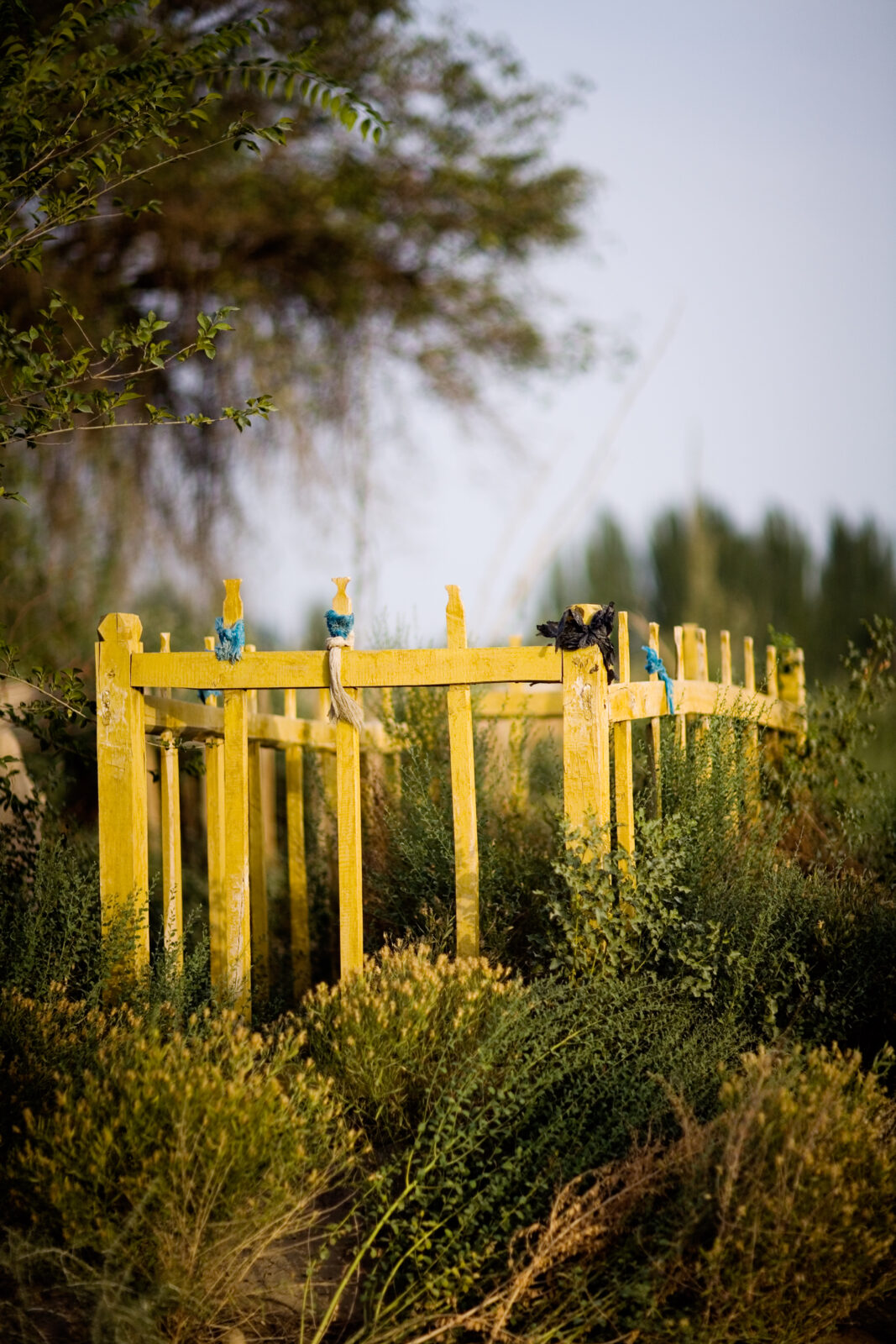Living Shrines of Uyghur ChinaPhotography by Lisa Ross
Rubin Museum
150 W. 17th St., NYC

Unrevealed, Site 4 (Yellow Marker) Lisa Ross [origin]; 2009 Archival pigment on cotton paper Courtesy of
the Artist object dimensions: 28 × 42 in L2013.3.9 Exhibitions: Rubin Museum of Art, “Living Shrines of Uyghur China:
Photography of Lisa Ross”, (02/08/2013 – 07/08/2013)
The Xinjiang Uyghur Autonomous Region is China’s largest province. It came under Chinese rule in 1949. With few exceptions, artists and foreign researchers have been denied meaningful access to the rural areas in Xinjiang. Lisa Ross’s close working relationships with a Uyghur anthropologist and a French historian focusing on Central Asian Islam have guided her more than eight-year exploration in the region. The extensive body of work from which this exhibition draws is rare in that it captures a time and place that is rapidly modernizing and transforming, as Xinjiang is now China’s largest source of untapped natural gas, oil, and minerals.
